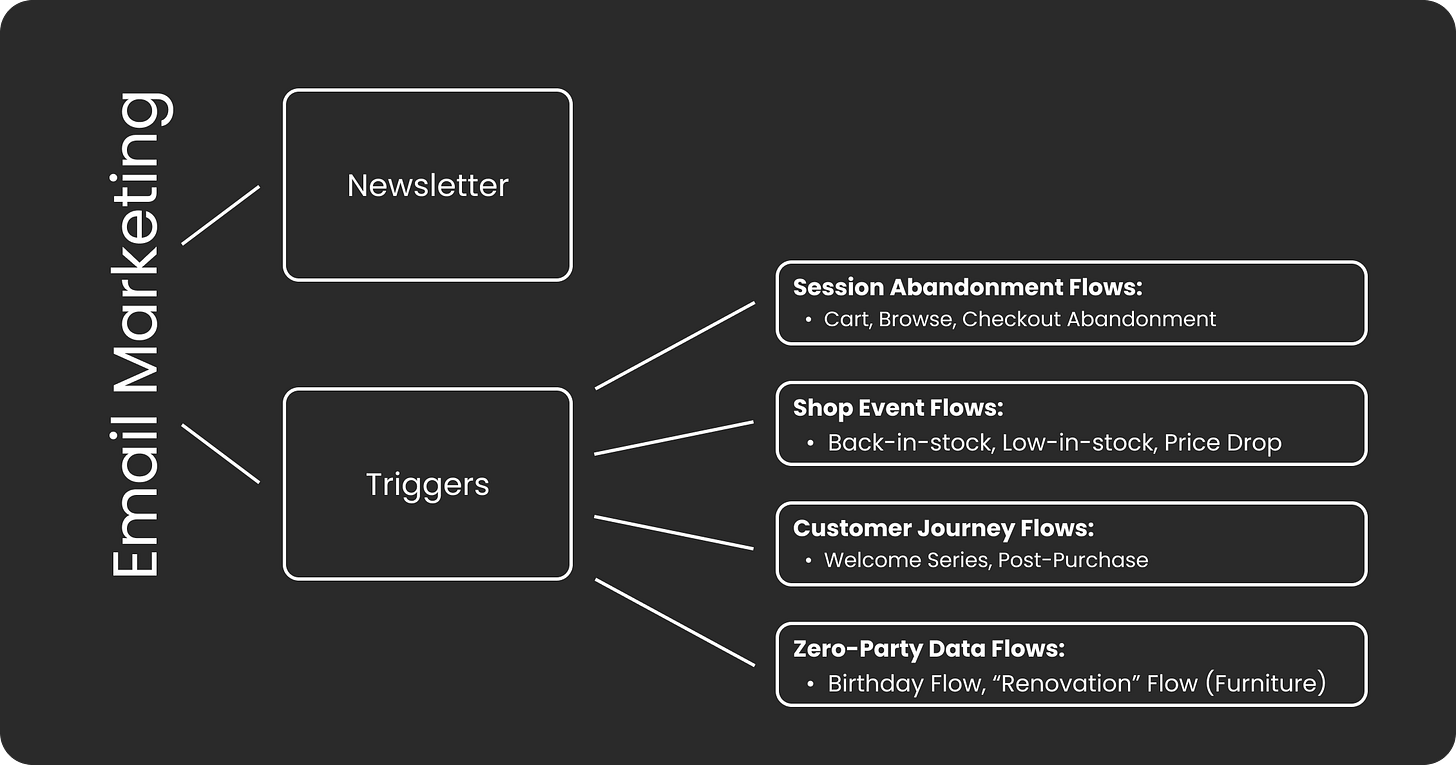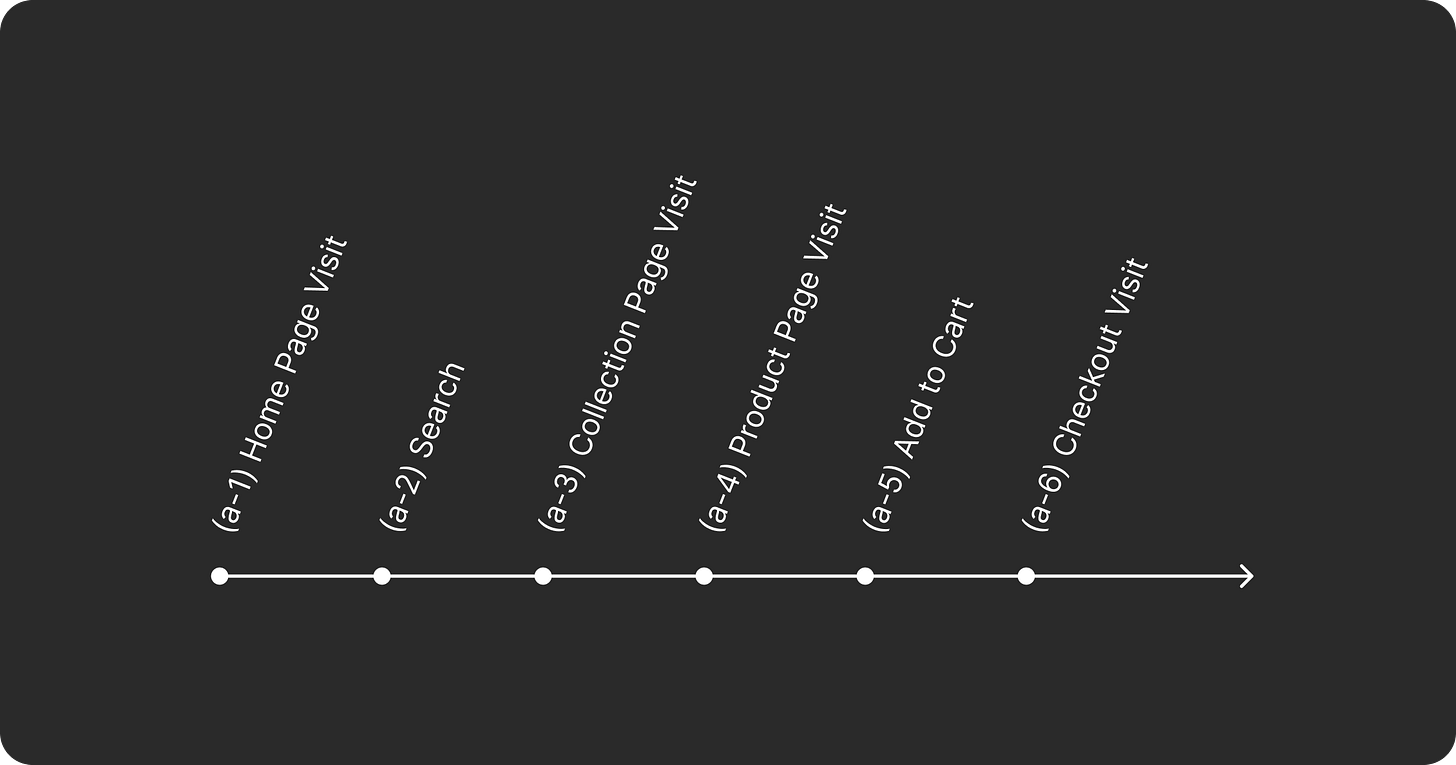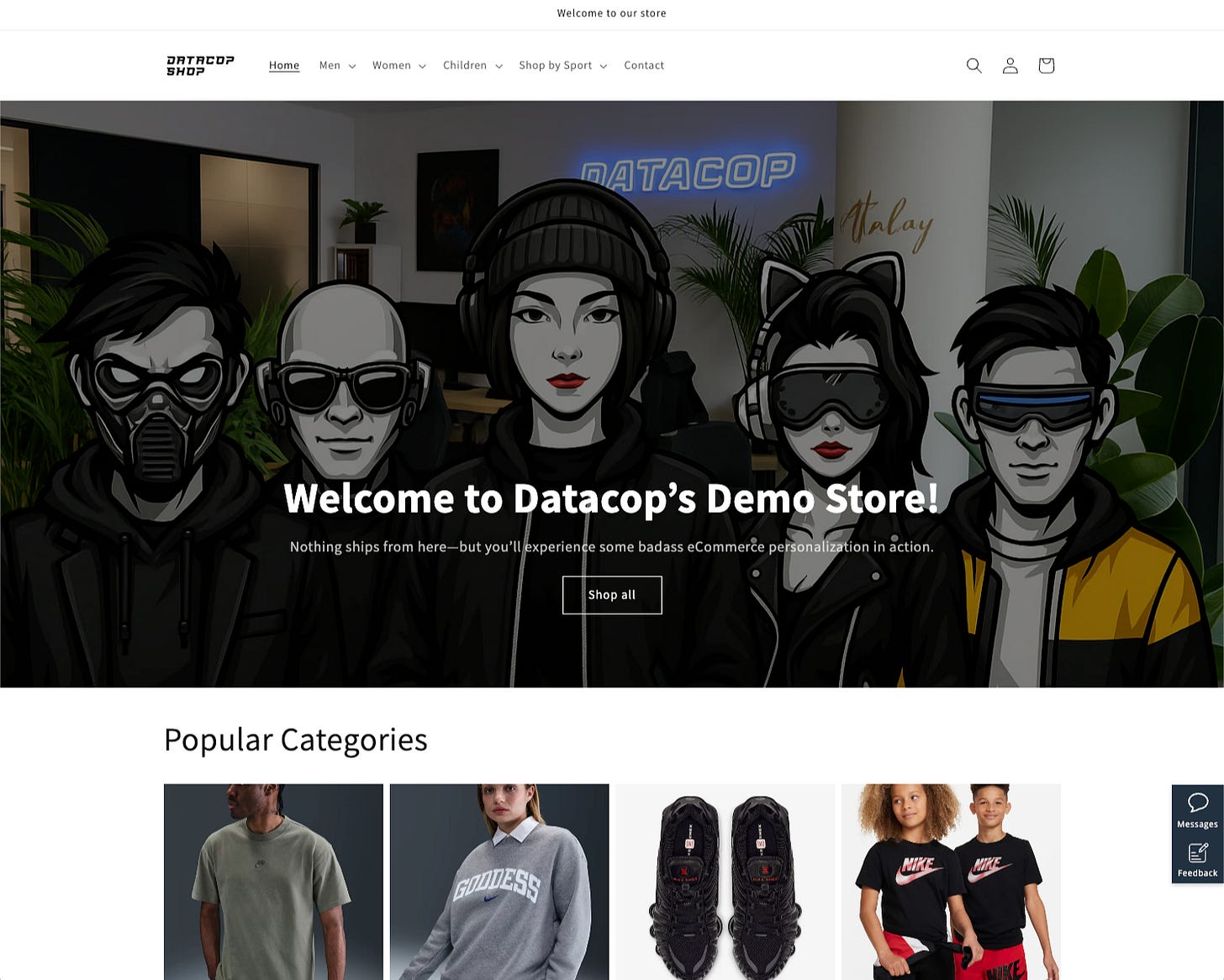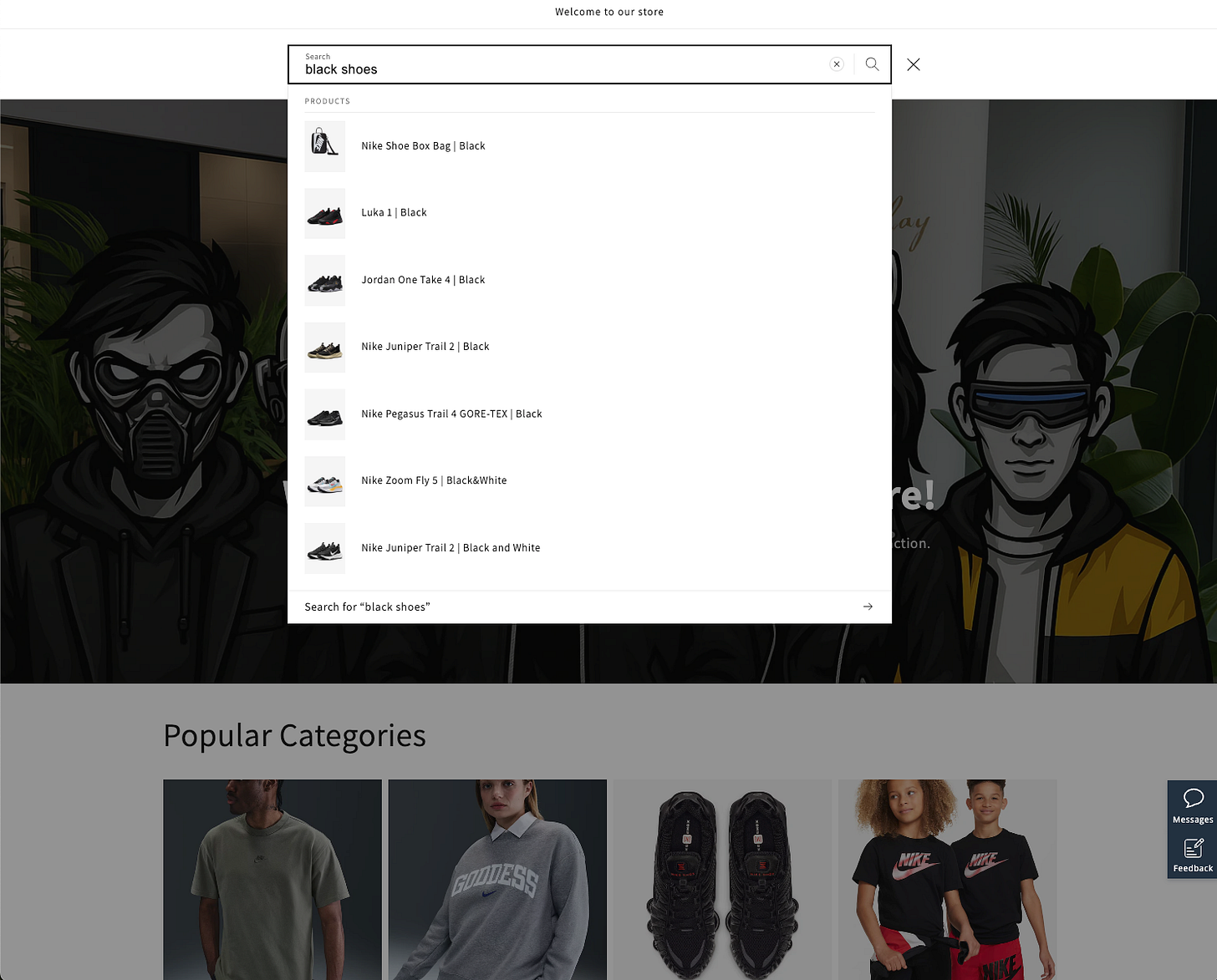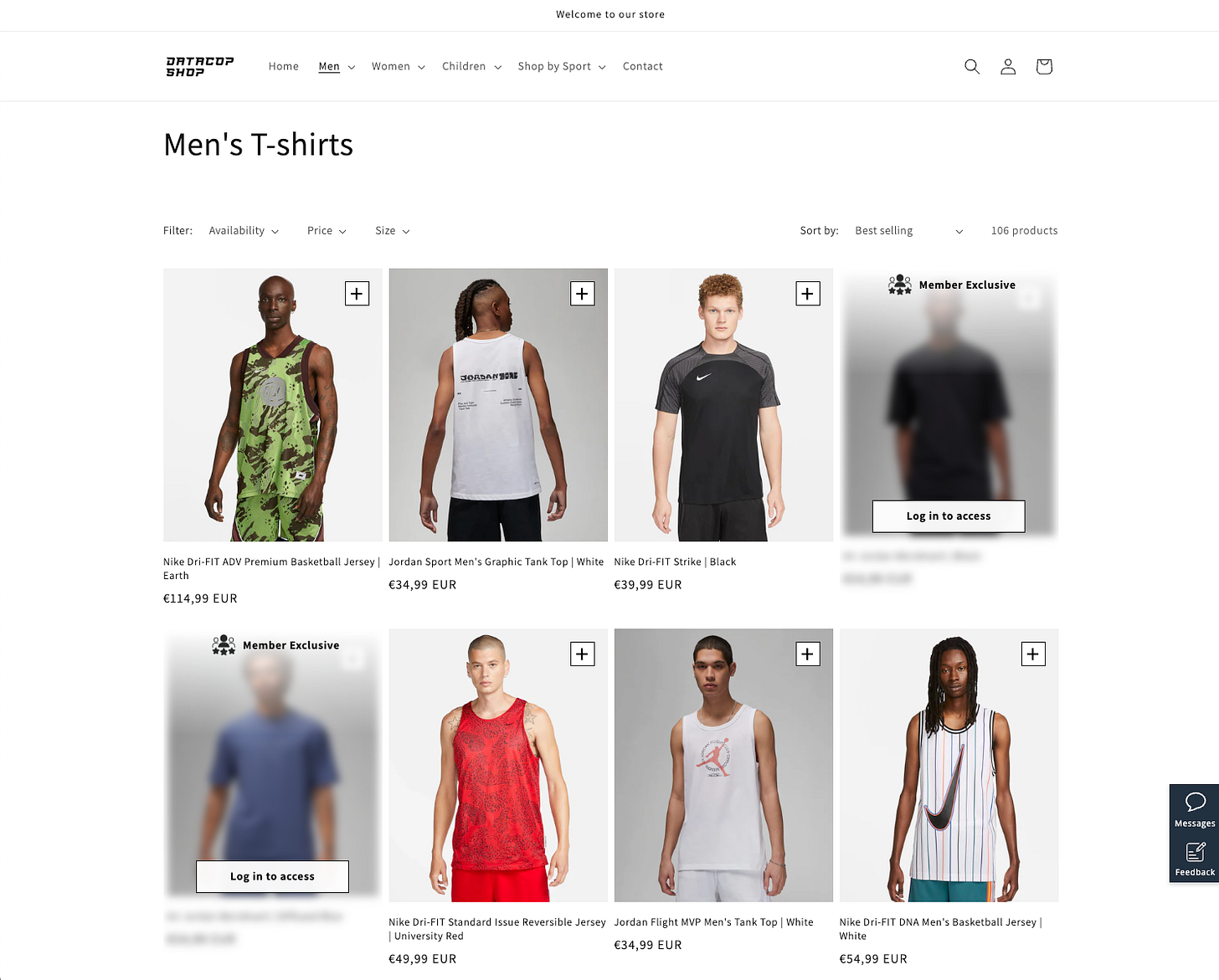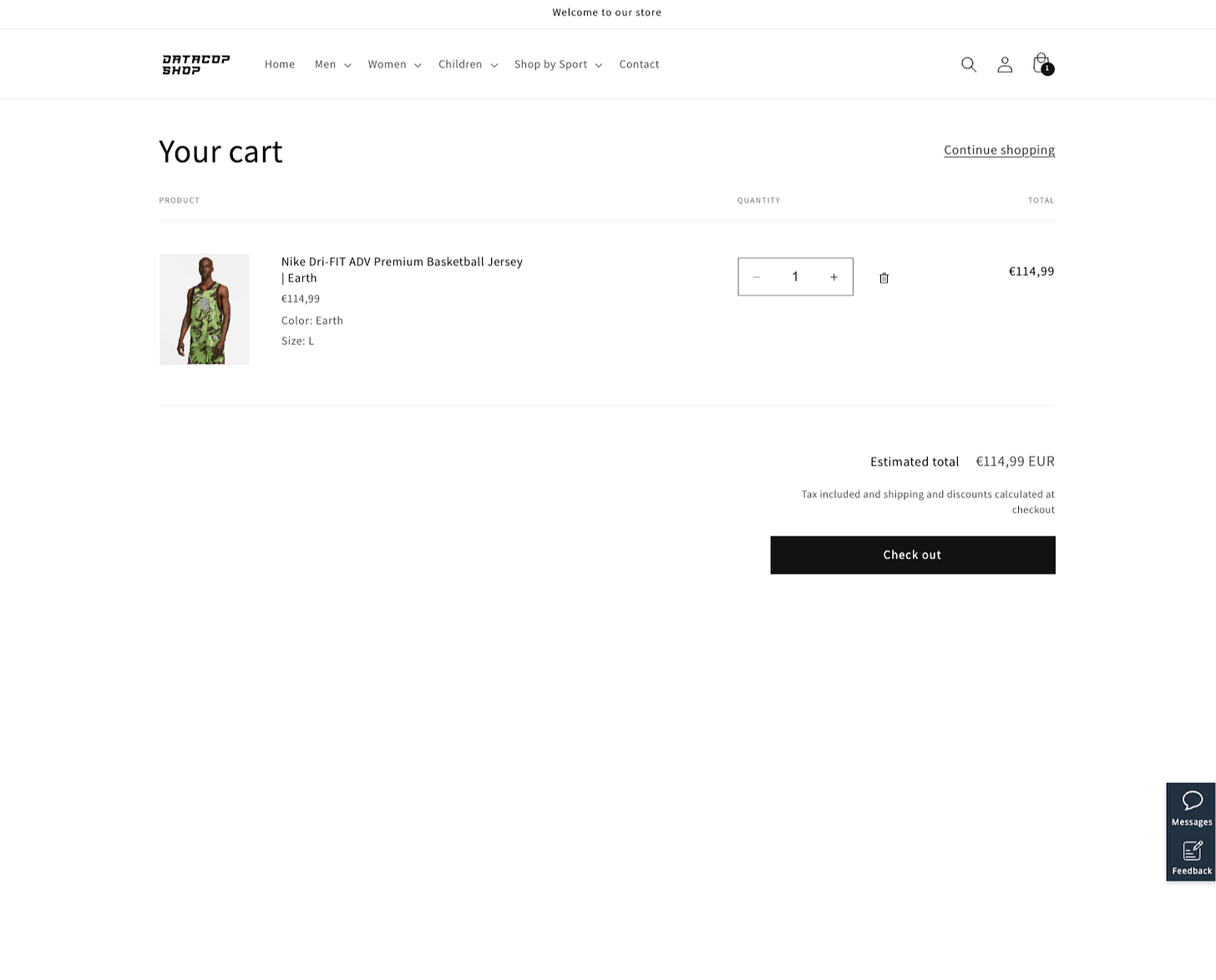19x Automated Email Flows That You Can Steal
In this article, you’ll find a complete list of email flows, organized into four main categories based on our experience as Marketing Operations Specialists.
We recently hosted a webinar where we explored the most common performance issues that arise in triggered emails. During the session, we also shared key performance benchmarks and introduced our own framework for evaluating the effectiveness of email triggers.
One of the central ideas we presented was a categorisation of triggered emails. In this article, we’ll take a deeper dive into that framework. We’ll also provide a comprehensive list of triggered email types that can be incorporated into your email marketing strategy.
Email Marketing Categorisation
Email marketing generally falls into two broad categories: newsletters and triggered emails.
The primary distinction lies in their audience and delivery. Newsletters target a broader audience and are sent on a predetermined schedule, with marketers deciding the specific day and time for delivery.
Triggered emails, in contrast, are sent to specific users based on their recent actions, which serve as the trigger for the campaign. For example, if a user abandons their shopping cart, they may receive a cart abandonment email. These emails typically outperform newsletters because they capitalize on the user’s recent engagement with the brand, making the communication timely and impactful.
Categories of Triggered Emails
Triggered emails can be further categorized based on user actions, events, or data. The following are the main types:
(a) Session Abandonment Flows
Think of these flows as follow-ups that are triggered when someone leaves your website at different touchpoints. From our experience, we’ve identified six types of triggered emails commonly implemented for each of these moments. The key touchpoints include:
(a-1) Home Page Visit
This scenario occurs when someone visits your homepage but doesn’t explore further. Because it reflects the lowest level of engagement on your website, emails triggered at this stage typically show the weakest performance. Still, if you already have the customer’s email address, this moment can serve as a useful trigger for launching a campaign.
(a-2) Search
If your website includes a search function, you can also treat search activity as an abandonment trigger. The advantage of this touchpoint is that you capture the exact search term the customer used during their session. This insight can then be leveraged to personalize the follow-up email with highly relevant content.
(a-3) Collection Page Visit
If a customer visits a specific collection page (for example, men’s t-shirts) but leaves without taking further action, this can also serve as a trigger for an abandonment flow. Since you know which product category the customer was browsing, you can use that insight to tailor the email campaign and make it more relevant.
(a-4) Product Page Visit
When a customer views a specific product but doesn’t complete a purchase, this moment can also serve as a trigger for an abandonment flow. In this type of campaign, you can be highly specific by featuring the exact product the customer was interested in. To strengthen the message, you might also include supporting elements such as customer reviews, ratings, or social proof.
(a-5) Add to Cart
This is perhaps the most well-known abandonment campaign: the cart abandonment flow.
(a-6) Checkout Visit
Some brands choose to separate cart abandonment and checkout abandonment into two distinct triggered campaigns. The key difference is that during checkout, customers often provide additional information—such as a shipping address—that can be leveraged in the follow-up campaign. This extra detail allows for deeper personalization that wouldn’t be possible in a standard cart abandonment flow.
(b) Shop Event Flows
The key difference between session abandonment flows and shop event flows lies in what triggers them. Session abandonment flows are initiated by a customer’s action—such as visiting and leaving the site at different touchpoints. Shop event flows, on the other hand, are triggered by an event within the store itself, like a product coming back in stock.
Take the back-in-stock flow as an example. A customer must first express interest by requesting to be notified when a product becomes available again. However, this action alone doesn’t trigger the campaign—it simply places the customer in the audience pool. The actual trigger occurs later, when the product is restocked, which could be a week, a month, or even longer after the customer’s initial request.
So, what are the typical shop event trigger flows?
(b-1) Back-in-Stock
Imagine a customer browsing your store who discovers that a product they want is currently out of stock. Many eCommerce companies offer the option to be notified once the item is available again. At Datacop, we believe the opportunity goes far beyond this simple use case. By expanding the audience for back-in-stock notifications, we’ve been able to significantly boost performance. In fact, as you’ll see in the article below, we increased back-in-stock revenue by more than 60%.
(b-2) Low-in-Stock
Imagine a customer browsing a product—or even adding it to their cart—that is now running low in stock. This creates a powerful trigger for a campaign that nudges them to complete their purchase before the item sells out.
The key difference from traditional browse or cart abandonment flows lies in timing and context. Let’s say I added a product to my cart but didn’t complete the purchase. I probably received a standard cart abandonment email but still chose not to buy. Now, fast forward two weeks: the same product I showed interest in is suddenly low in stock. At this moment, we send a new low-stock notification email. By combining the customer’s past intent with the urgency of limited availability, we re-engage them at exactly the right time—when they’re more likely to act.
(b-3) Price Drop
A similar idea applies to price drops. Instead of inventory decreasing, the trigger comes from a decrease in price. If a customer previously browsed a product or added it to their cart, and that product is later discounted, this creates the perfect moment to re-engage them. A price-drop email flow leverages both the customer’s prior interest and the new incentive of a lower price—making it a highly effective way to drive conversions.
(b-4)Trending Products
Let’s say a specific product is selling faster than usual. This can serve as a powerful trigger for a campaign targeting customers who previously showed interest in that product, reminding them to act before it sells out.
(c) Customer Journey Flow
Customer Journey flows are flows that are triggered at the significant milestones or events in a customer journey. These are the customer journey flows that we’ve seen in the wild
(c-1) Welcome Flow
The email welcome flow is typically sent to people who have just subscribed to your mailing list. At this stage, it’s important to remember that most subscribers are not yet customers. This makes it crucial to include strategies that lay the groundwork for converting them into buyers.
One of the best opportunities within the welcome flow is collecting zero-party data, which can be used to personalize future communication. For example, here’s how a welcome email might differ when tailored to two different audiences:
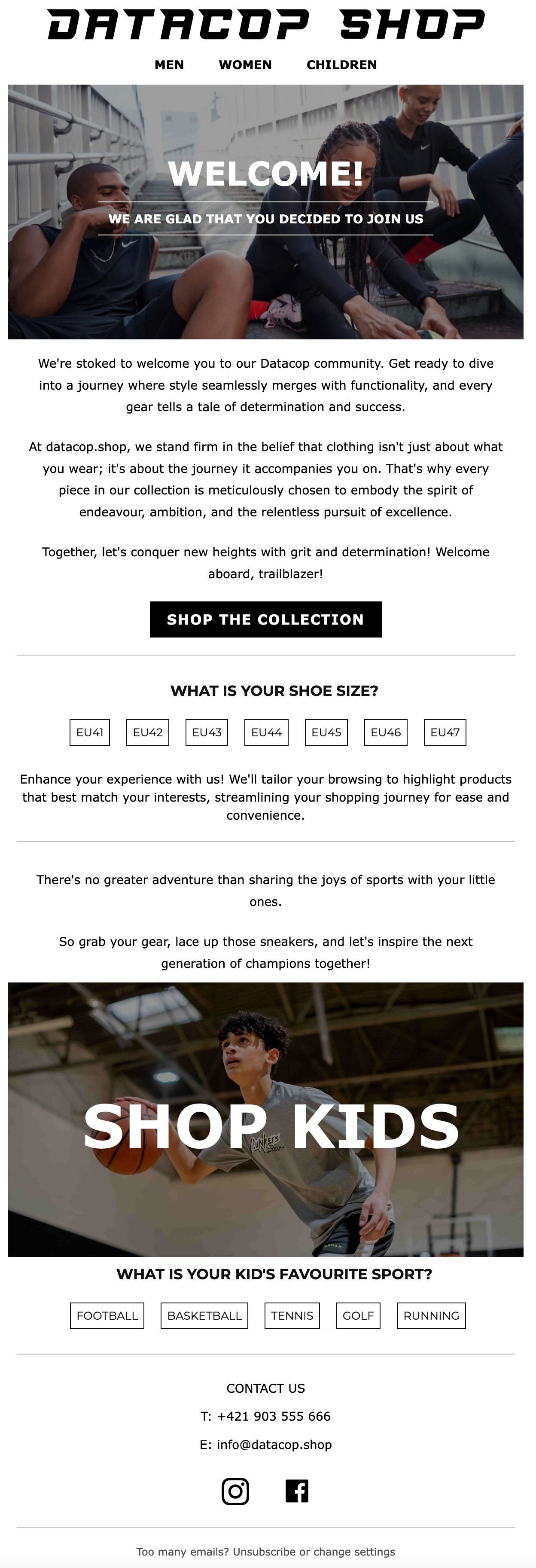
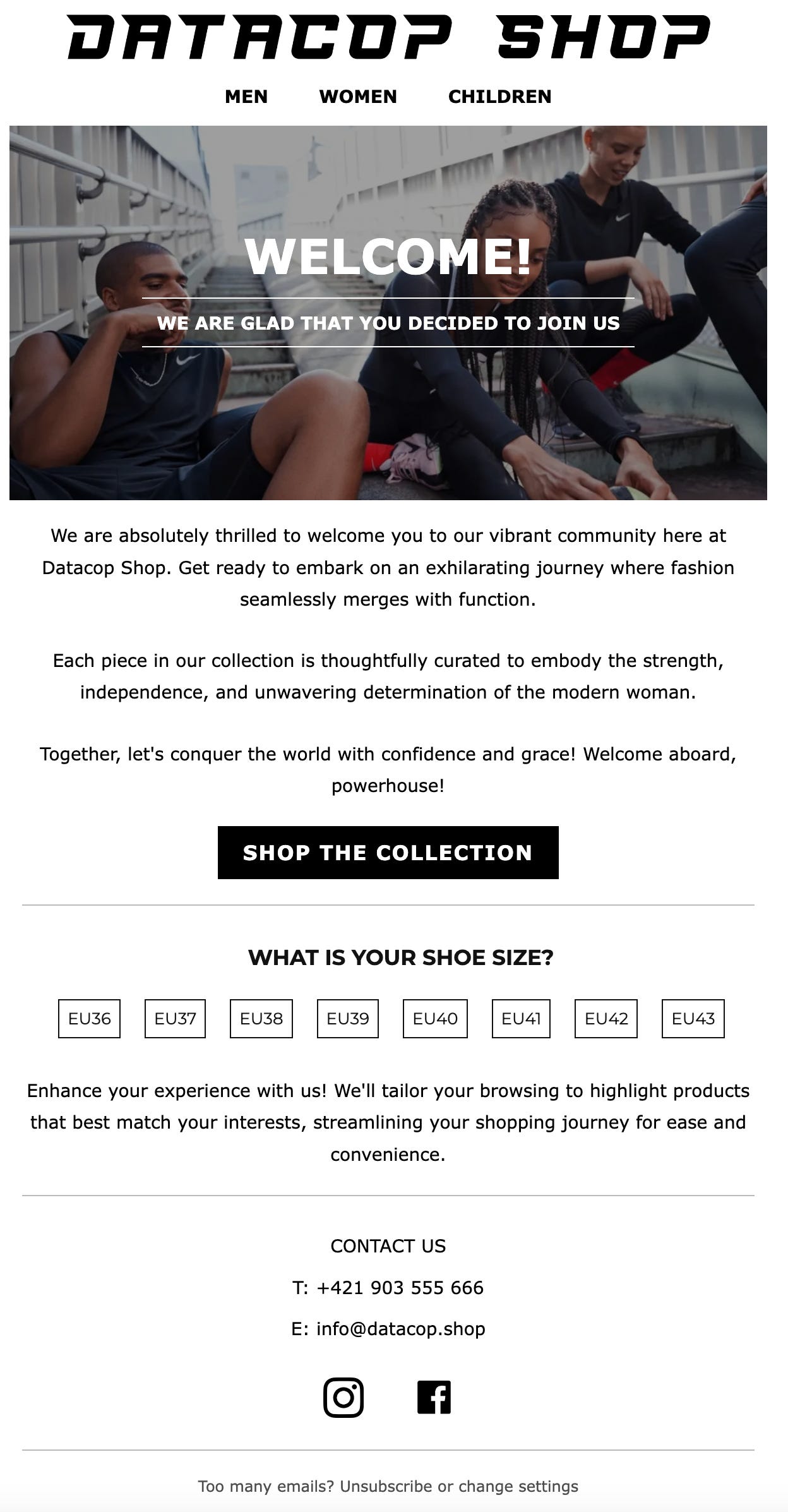
(c-2) Post-Purchase Flow
The post-purchase flow is an email sequence sent to a customer after they complete a purchase. It typically consists of multiple emails, each serving a specific purpose. Common objectives include:
Order Confirmation
Immediately reassure customers that their order was received with a confirmation email that summarizes purchase details.
Note: Typically dispatched via an ERP system, though it can also be integrated into Bloomreach Engagement.Shipping & Delivery Updates
Keep customers informed when their order is processed, shipped, and delivered, including tracking details. Timely updates reduce anxiety and prevent support queries.
Note: Also often sent from an ERP system but can be integrated with Bloomreach Engagement.Product Usage Tips & Guides
After delivery, share helpful content on how to use or care for the product. This improves satisfaction and ensures proper use.
Note: Importing delivery data into Bloomreach allows you to time these updates perfectly.Request for Feedback or Reviews
Ask for feedback or reviews once customers have had time to use the product. This provides insights for your business while making customers feel valued.Cross-Sell & Upsell Recommendations
Suggest related products or accessories based on purchase history and browsing behavior. Personalized recommendations drive repeat purchases and increase lifetime value.
Note: Some customers place a second order within minutes of their first. Sending immediate upsell emails—with incentives like free shipping—can capture these opportunities.Loyalty & Rewards Invitations
Encourage customers to join your loyalty program, highlighting benefits such as points, exclusive discounts, or early access to new products.Exclusive Offers for Returning Customers
Reward loyalty with personalized offers or discounts on future purchases to keep customers coming back.Replenishment Reminders
For consumable or time-sensitive items (e.g., skincare, supplements, pet supplies), send reminders when it’s time to reorder.Educational Content
Share how-to guides, industry insights, or trends related to the purchase to keep your brand top of mind and build community.
(c-3) Refund Flow
The refund flow is often overlooked by many eCommerce companies, but it can be a powerful touchpoint for customer communication. When a customer returns a product, it’s an opportunity to:
Collect feedback: Understand why the product was returned.
Offer alternatives: If the customer hasn’t placed a subsequent exchange order, suggest alternative products that might better suit their needs.
(c-4) Loyalty Flow
If you have a loyalty program, it’s recommended to create a dedicated email sequence for key milestones within the customer journey, such as:
Welcome email when a customer first joins the program
Milestone emails celebrating achievements or unlocking a new tier
Progress reminders showing what’s needed to reach the next tier and the benefits of doing so
Expiration reminders for points or benefits that are about to expire
(c-5) Win-Back Flow
This flow targets customers who have purchased from your brand in the past but haven’t engaged or made another purchase for a significant period of time. The main goal is to reawaken their interest—by gathering feedback on why they haven’t returned and encouraging them to start shopping with you again.
(d) Zero-Party Data Flows
These flows are often the most dependent on the industry in which an eCommerce company operates. Zero-party data refers to customer preferences or key information that they willingly share with you. This data can then be used to trigger personalized responses, such as tailored email series.
Here are a few examples we’ve observed across different industries:
(d-1) Birthday Flow
This is an email flow that can be applied across most industries. If you collect a customer’s birthday, you can send them a celebratory email on their special day. Many brands also include a birthday discount code or another type of exclusive offer to make the occasion more rewarding.
(d-furniture) Home Renovation Flow
One of the most valuable pieces of information you can collect as a furniture store is whether a customer is planning—or currently undergoing—a home renovation. If so, it’s a strong signal that they’re prepared to make significant purchases in the near future. Naturally, you want to maximize the chances that they spend the bulk of that budget with your business.
If you gather this information on your website, you can follow up with a tailored email series designed specifically for renovating customers. These emails might include helpful tips for the renovation process, requests for more details about the type of renovation, and personalized product recommendations based on their needs.
(d-baby care) Pregnancy Flow
Imagine you operate an eCommerce platform specializing in baby care products. Knowing the birth date or expected due date of your customer’s baby can transform your business strategy. With this information, you gain a knowledge of the child’s age throughout their entire lifecycle.
This knowledge enables you to personalize the products displayed on your homepage according to the child's developmental stage. It also helps you tailor newsletter content for the upcoming months and informs product selection for retargeting campaigns throughout the customer's journey.
In fact, we’ve seen this approach successfully implemented by a German baby care retailer (though they are not our client). Their email collection banner not only captured standard details but also included a field asking for the baby's birthdate or expected delivery date.
When we subscribed to their email communication, we received this message during the 23rd week of our pregnancy—when our baby was about the size of a banana.
Here’s the email we received during the 40th week of our pregnancy when our baby was approximately the size of a pumpkin.
And this is the email we received when our newborn was 1 month old.
(d-sports wear) Favourite Sport Flow
If you’re a brand that sells sportswear across different sports, collecting information about the activities your customers are involved in can be highly valuable for your email campaigns. For example, if you learn that I practice Brazilian Jiu-Jitsu, you could showcase the specific product line you offer for this sport, recommend related gear such as rash guards and gis used during training, or even provide personalized guidance on how to choose the right gear for my needs.
Email Triggers Overview
We covered quite a few triggered email campaigns today—19 in total. Below is a visual that summarizes all of the triggers we discussed, organized into the four main categories of email triggers we reviewed.
If you found this post valuable…
We hope this article was valuable to you. If you enjoyed it, don’t miss out on future articles—subscribe for free and have our latest content delivered straight to your inbox.
If you'd like to discuss any aspect of eCommerce marketing operations with us or explore potential collaboration, feel free to schedule a meeting using the link below:



